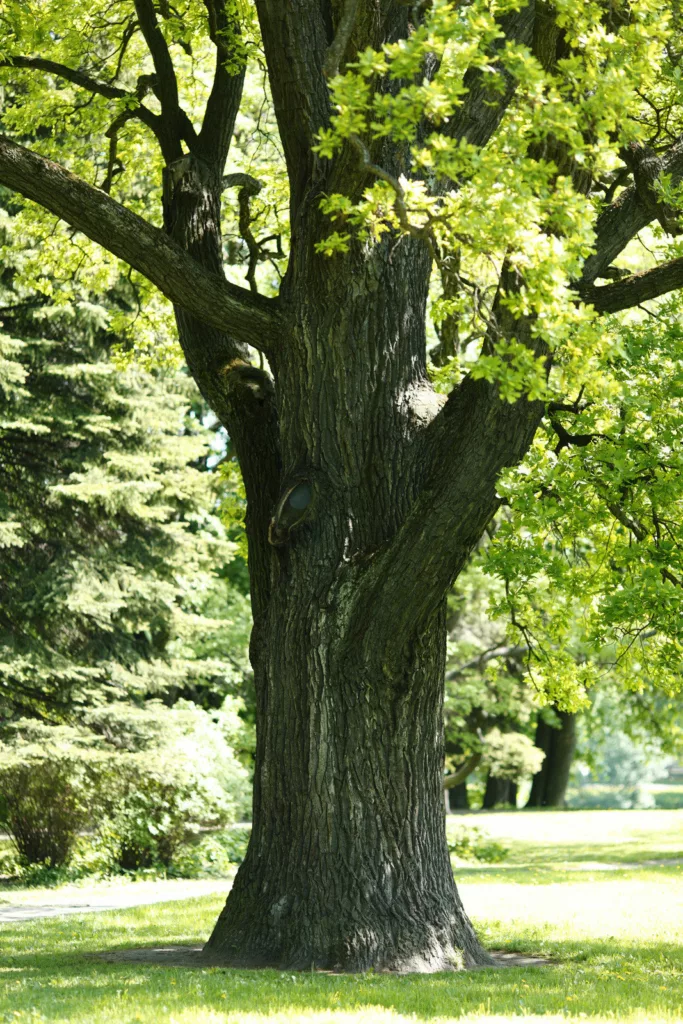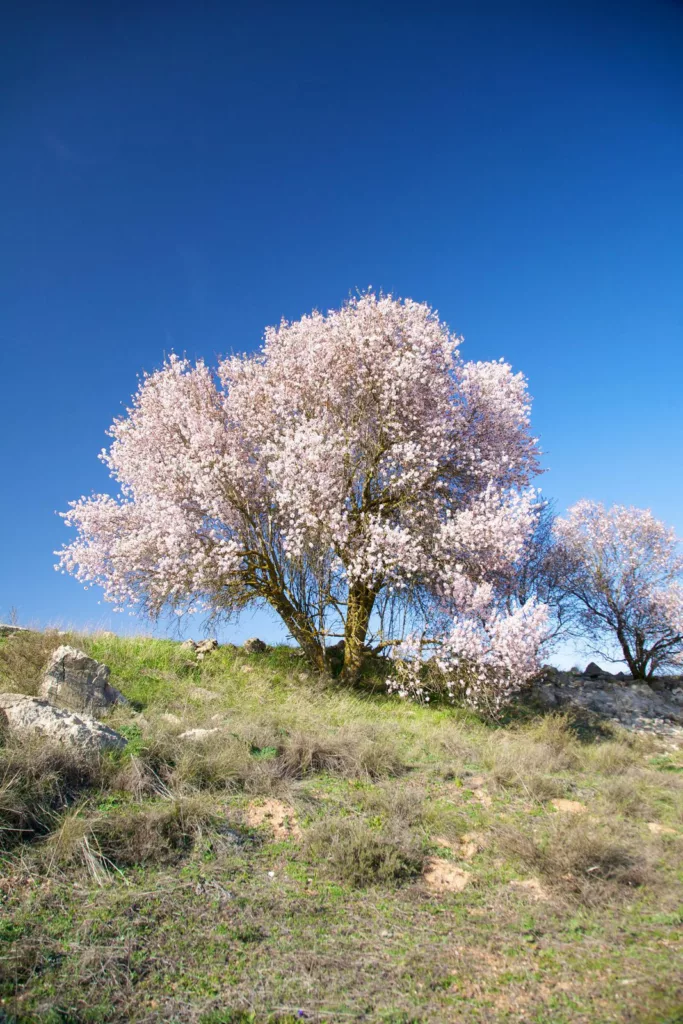Axe handles break unannounced, especially when cutting thick log wood. Also, buying a new axe handle to replace the broken one can be expensive for most users. Therefore, making your axe handles can relieve you of the expense while offering chances to customize your handles per your needs. But which is the best axe-handle wood?
Hickory

A Hickory Tree
Experienced woodworkers will consider hickory one of the best woods for axe handles. Hickory has high durability, is lightweight, and is an excellent shock absorber. The straight-grained wood allows easy carving into axe handles.
Hickory is a native North American wood, and you can readily find it across the United States. Hickory wood is highly affordable compared to other axe-handle wood options.
It has a MOE value of 14,900 MPa, allowing it to withstand high pressures without losing its strength. Hickory can be an excellent option, especially if you want a comfortable, strong, crack-resistant, and long-lasting axe handle.
Oak

The Oak makes excellent ax handles.
Oak takes our second position in the list of the best axe-handle woods. Oak’s availability all over the country makes it affordable for most woodworkers.
Of all the species, white oak is the most durable and strongest wood, with high density. Also, the high-density character makes oak a great shock absorber. Most oak species are resistant to fungi and pests; hence you can store the wood anywhere.
If you acquire an Oak axe handle, you can strike any wood log since it has a MOE value of about 12,300 MPa. However, oak axe handles can rust your metal blade due to their ability to produce acidic elements.
You can use metal blades with an anti-rust coating to avoid rusting.
Ash

An Ash Tree- Ash makes flexible and strong ax handles.
Some woodworkers will choose ash wood for axe handles. A 12,000 MPa MOE value makes Ash a competitive candidate for the best axe handle woods.
Ash axe handles are highly flexible and robust, relieving you from muscle fatigue when using them, even on the strongest logs. Ash wood is straight-grained and contains fibers, making it absorb shock while attenuating the chances of splitting and chipping.
However, ash wood may fall short of the first two options because it is less suitable for outdoor activities and has lower durability.
Birch

A beautiful woman leans on a Birch tree.
Every experienced woodworker will tell you Birch wood is the king of shock-absorbing features. Various species of Birchwood have varying MOE ratings. The famous yellow birch species has a rating of 13,900 MPa, making it one of the most resilient woods ever.
Like most options in this list, birch wood is strong and durable if you carve it into an axe handle. The wood may not be as strong and durable as the first three choices, but it remains a great option. You can use a birch axe handle outdoors and store it outside without worrying that it suffers damage from weather.
Notably, birch wood has a low presence in the United States. Therefore, the wood may be less affordable in some regions, depending on its availability.
Axe-handle wood: Sugar Maple

A forest of Sugar Maple trees
Have you ever checked the type of wood used to make your roofs, floors, furniture, and baseball bats? Sugar maple is among the trees that make up most of these materials. Sugar maple is admiringly strong; hence it has a wide-ranging use.
Also, Sugar maple is very affordable and available for use. The wood has a smooth texture and is good-looking, allowing you to feel comfortable while cutting logs with it.
Sugar Maple has a MOE rating of 12,600 MPa hence its shock absorbent level is below hickory and ash. Due to its hardness, sugar maple wood is likely to shatter when exposed to high shock levels.
Axe-handle wood: Cherry

You can make light-purpose ax handles from the cherry tree
Cherry wood is the most available among all the other woods. Due to its availability and affordability, many people prefer using cherry wood to carve axe handles.
Axe handles made from cherry wood have a smooth and refined appearance. Although cherry is a softwood, it also can use for light log-cutting tasks.
With a low MOE rating of 10,300 MPa, there may be better choices than cherry wood when working under extreme pressure. Also, cherry wood is less durable and brittle compared to hardwood options.
Axe-handle wood: Mahogany

A Mahogany Plantation in Hawaii
Mahogany wood is readily available across the nation. Besides, It’s naturally attractive, thus allowing your axe handle to appear smooth. Remember to oil your mahogany axe handle regularly, as it gives it a new-like appearance for many years.
Furthermore, avoid putting your mahogany axe handle under extreme pressure because it can shatter.
Conclusion
You now have essential tips for choosing the best wood for your axe handle, depending on your needs. Each option in our list offers unique characteristics, strengths, and weaknesses. Take your time to make your choice. For further queries, reach out to us.
